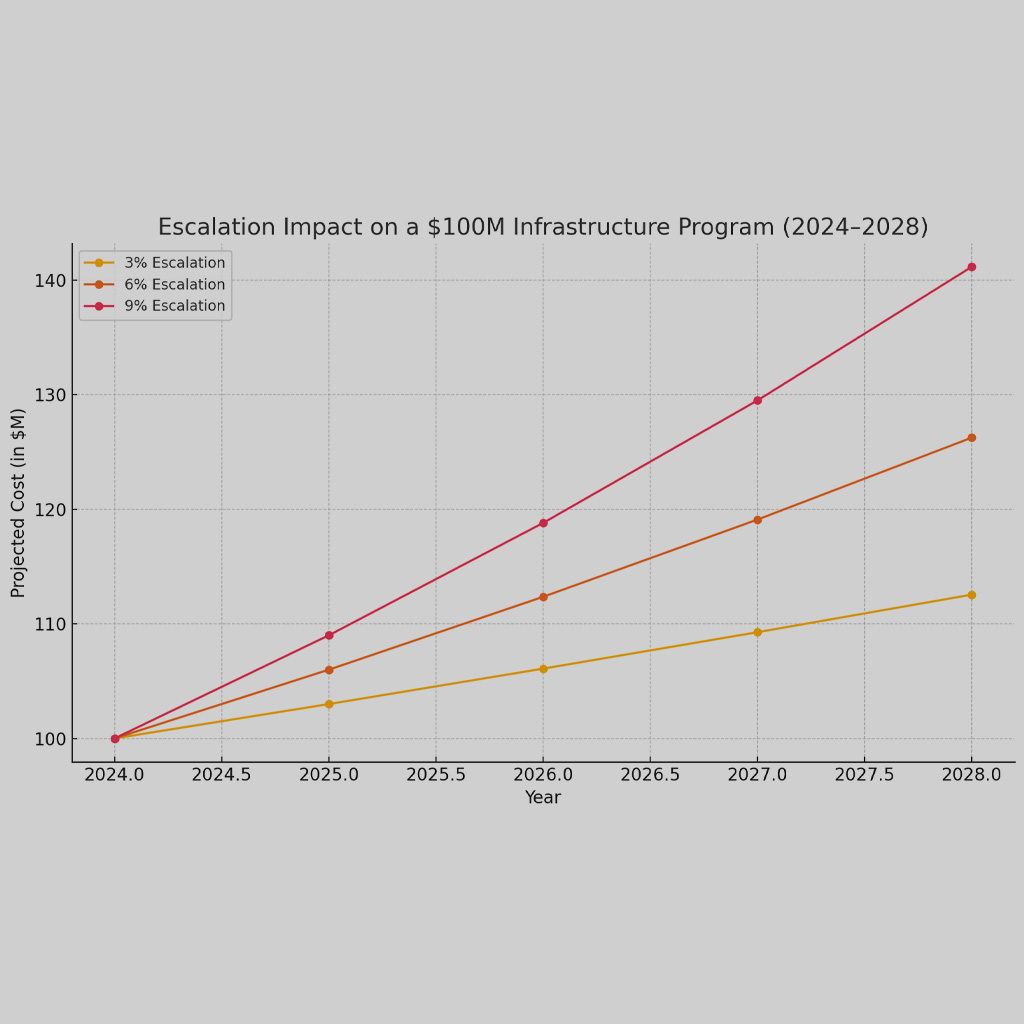Effective process management is essential to the success of your organization, providing benefits such as increased efficiency, improved quality, reduced costs, and customer satisfaction. However, process management can be challenging due to resistance to change, resource constraints, and process complexity. Program managers and development services professionals can overcome these challenges by leveraging technology and tools. These approaches help define clear goals and objectives, document processes and procedures, and continuously monitor and improve processes to ensure they are aligned with your business objectives and stakeholders’ expectations.
Technology in Process Management
Integration of technology plays a significant role in process management, whether through process automation, collaboration, or data analysis. Some common technology solutions include:
Business Process Management (BPM) Software: BPM software, such as Procore, enables oversight and automation of business processes. Procore is a leading cloud-based construction management software that includes powerful BPM capabilities, and serves as a centralized platform for various stakeholders involved in construction projects, including project managers, contractors, subcontractors, architects, and owners. Here are some key aspects of Procore and how it can enhance efficiency:
- Project Documentation and Control: Procore allows users to store, organize, and manage project-related documents in a centralized repository. This ensures all stakeholders have access to the latest and accurate project information, reducing the time wasted searching for documents or relying on outdated versions. With controlled access and permissions, Procore ensures the right people have access to the right information, improving collaboration and decision-making.
- Streamlined Communication: Effective communication is crucial in construction projects, and Procore provides a range of communication tools to facilitate seamless collaboration. Users can share project updates, announcements, RFIs (Requests for Information), and other important information through Procore’s messaging, commenting, and notification features. Real-time communication helps avoid delays, resolve issues promptly, and keep all team members on the same page.
- Project Management and Scheduling: Procore offers project management features that enable users to create and manage project schedules, assign tasks, and track progress. Scheduling tools optimize resource allocation, avoid conflicts, and improve time management. By having a clear overview of project timelines and milestones, teams can identify bottlenecks, make informed decisions, and ensure timely project completion.
- Change Order Management: Change orders are common in construction projects, and Procore simplifies the change order process. Users can create, track, and manage change orders within the system, ensuring transparency and accountability. Procore’s change order management capabilities reduce the likelihood of errors, disputes, and delays, thereby improving efficiency and minimizing potential cost overruns.
- Quality and Safety Management: Procore includes modules for managing quality control and safety compliance. Users can document and track inspections, track non-conformance issues, and generate reports for quality and safety audits. By streamlining these processes, Procore helps construction companies maintain high-quality standards, ensure regulatory compliance, and enhance overall project efficiency.
- Data and Analytics: Procore offers effective reporting and analytics capabilities, allowing users to gain insights into project performance, productivity, and costs. By analyzing data captured within the system, construction companies can identify areas for improvement, optimize resource allocation, and make data-driven decisions to enhance efficiency and profitability.
- Mobile Accessibility: Procore provides mobile applications for handheld devices, allowing stakeholders to access project information, collaborate, and complete tasks on the move. Mobile accessibility improves responsiveness, enables quick decision-making, and keeps the project moving forward, even when users are not in the office.
Customer Relationship Management Software (CRM): One popular example of CRM software is Salesforce. Salesforce helps businesses manage customer interactions and streamline customer service processes. CRMs can support customer interactions and enhances customer service by:
- Centralized Customer Data: CRM software like Salesforce allows businesses to store and manage all customer-related information in one centralized database. This includes contact details, communication history, purchase history, preferences, and more. Having a single source of customer data enables businesses to have a holistic view of each customer and provide personalized interactions.
- Lead and Opportunity Management: CRM software helps businesses track and manage leads and opportunities effectively. It enables sales teams to capture and qualify leads, assign tasks, set reminders, and track progress. This streamlines the sales process, ensuring that no opportunities are missed and allowing sales representatives to engage with customers in a timely manner.
- Communication and Collaboration: CRM software facilitates communication and collaboration among team members. It allows employees from different departments (such as sales, marketing, and customer support) to access and update customer information, share notes, and communicate important details. This improves internal coordination, ensuring everyone involved in customer interactions has the necessary information to deliver a seamless experience.
- Customer Service Automation: CRM software can automate ticket creation, routing, and escalation, ensuring that customer inquiries are addressed promptly. It also enables businesses to create self-service portals where customers can find answers to frequently asked questions or submit support requests. By automating routine tasks, CRM software frees up customer service agents to focus on more complex and critical customer issues.
- Analytics and Reporting: CRM software generates insightful reports and visualizations that help businesses gain a deeper understanding of customer behavior, preferences, and trends. These insights can be used to tailor marketing campaigns, identify upsell or cross-sell opportunities, and improve overall customer satisfaction.
Enterprise Resource Planning (ERP) Software: One popular form of ERP software is SAP ERP. Organizations that use an ERP like SAP can streamline their operations by consolidating data from different areas such as finance, human resources, supply chain management, manufacturing, and sales. ERPs can help access real-time information, collaborate effectively, and make informed decisions by:
- Integration and Forecasting: ERP software software like SAP ERP enables seamless integration between departments like procurement, production planning, inventory management, and sales. When a customer places an order, the sales team enters the details into the system, triggering the procurement department to initiate the purchase of raw materials.
- Procurement: The procurement module of SAP ERP facilitates efficient vendor selection, purchase order creation, and tracking of delivery. Once the raw materials arrive, the inventory management module updates the stock levels, triggering the production planning department to schedule the manufacturing process.
- Production: The production planning module optimizes the production schedule based on real-time data, ensuring the right amount of raw materials is available at each stage. This minimizes excess inventory, reduces carrying costs, and prevents stockouts.
- Finance: Simultaneously, the finance department can monitor the costs associated with procurement, production, and inventory management. They can analyze the data to identify areas of improvement, cost-saving opportunities, and potential waste.
- Optimization: Through this coordination, SAP ERP enables efficient collaboration and data sharing between departments, eliminates manual data entry, reduces errors, and improves overall operational efficiency. It also provides management with comprehensive insights and analytics to identify bottlenecks, streamline processes, and reduce waste.
Common Process Management Tools
To effectively manage processes, organizations can use a variety of tools, including:
- Process Documentation and Mapping: Process mapping focuses on capturing the flow of activities, tasks, and steps involved in a specific process. It aims to provide a detailed understanding of the sequence of activities, inputs, outputs, and decision points within a process. Process mapping is often used to analyze and improve individual processes within an organization.
- Value Stream Maps: Value stream mapping looks at the end-to-end flow of value creation within an entire value stream or a series of interconnected processes. It focuses on capturing not only the activities but also the flow of information, materials, and resources across the entire value stream. Value Stream Mapping aims to identify areas of waste, inefficiency, and bottlenecks that affect the overall value delivered to customers.
- Process Audit and Reviews:
- Process audits involve a systematic examination and verification of processes, procedures, and activities to determine if they comply with industry standards, policies, regulations, and best practices. The primary purpose of process audits is to identify non-compliance, inefficiencies, risks, and areas for improvement within the processes.
- Process reviews are less formal than audits and focus on evaluating and analyzing existing processes to identify areas for improvement, enhance efficiency, and optimize performance. They are usually carried out by process owners, managers, or teams directly involved in the processes being reviewed.
- Process Automation: Process automation can help to improve efficiency and reduce waste by eliminating manual processes and streamlining workflows. We previously discussed BPM and workflow automation. Some additional examples of process automation include:
- Robotic Process Automation (RPA): RPA involves the use of software robots or “bots” to automate repetitive, rule-based tasks. These bots can interact with various applications, perform data entry, extract information from documents, and execute tasks across different systems.
- Chatbots and Virtual Assistants: Chatbots and virtual assistants automate customer interactions and support processes. They can provide instant responses to customer queries, assist with order processing, or perform basic troubleshooting, freeing up human resources for more complex tasks.
By investing in the necessary tools and methodologies for effective and efficient process management, organizations can optimize their operations, reduce waste, and achieve their strategic goals. For infrastructure program managers and municipal development services departments, this investment is particularly crucial. How well you manage your processes directly impacts the economic growth and well-being of the communities you serve. Clear understanding of processes, along with the adoption of best practices and technology solutions, enables permitting professionals to support local government economic objectives, enhance organizational capacity, and contribute to the success of their communities.
At Front Line Advisory Group (FLAG), we are providing process improvement and change management services to help municipalities collect and analyze data, improve stakeholder communication, leverage technology, develop training plans, and more. We believe these are the most effective and affordable ways for municipalities to scale their capabilities. Contact us for more info at info@frontlineadvisorygroup.com.













